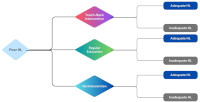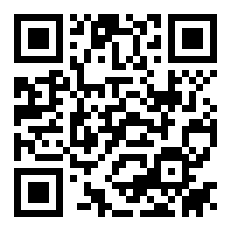A Comparative Analysis of Costs and Outcomes of a Model Teach-Back and Regular Educational Intervention for Enhancing Health Literacy in Nigeria
DOI:
https://doi.org/10.60787/tnhj.v24i2.803Keywords:
Health literacy, Nigeria, cost impact analysis, teach back interventionAbstract
Introduction: Health literacy describes patient-provider interactions, involvement in the healthcare system, rights and duties, and health information-seeking habits. It’s resultant impact on illness prevention, individual and social competency, and health outcomes make it relevant for patients and health authorities. This study aimed to model the costs and outcomes associated with a teach-back educational intervention compared to a regular educational intervention to improve health literacy in Nigeria.
Method: A decision tree analysis was designed to capture the progression of participants through a teach back educational intervention, a regular educational intervention and no intervention (control). The decision tree model was built in Microsoft excel, and the various input were obtained from literature and best estimates where applicable.
Result: Baseline results from the model estimated a cost of ₦765,000 and ₦670,000 for the teach- back & regular educational intervention respectively, while cumulative outcomes include Quality of life gain (228.36 vs 140.96), In-Patient hospital costs reduction (-₦ 462,137.40 vs -₦ 285,270.00), Increased adherence rates (145.80 vs 90.00), Gain in self-care ability (31.21 vs 19.26) for the teach -back & regular educational intervention respectively. Scenario analysis showed the same trends.
Conclusion: Education remains the major channel for improving health literacy, and implementing a teach-back intervention will substantially yield more benefits and costs compared to a regular education method. By prioritising health literacy, Nigerian health authorities can empower individuals to take an active role in their healthcare, leading to improved health outcomes and overall well-being.
Downloads
References
Hepburn M. Health Literacy, Conceptual Analysis for Disease Prevention. Int J Collab Res Intern Med Public Health. 2012;4(3):228-238.
Massey PM, Prelip M, Calimlim BM, Quiter ES, Glik DC. Contextualizing an expanded definition of health literacy among adolescents in the health care setting. Health Educ Res. 2012;27(6):961-974.
Parnell T. Health Literacy in Nursing: Providing Person-Centered Care. Health Literacy in Nursing. [Internet]. 2014. Available from: https://www.proquest.com/books/health-literacy-nursing/docview/2132093448/se-2?accountid=14542
Mancuso JM. Health literacy: A concept/dimensional analysis. Nurs Health Sci. 2008; 10:248-255.
Institute Of Medicine| Board on Neuroscience and Behavioural Health| Committee on Health Literacy. Health literacy: A prescription to end confusion. National Academies Press; 2004.
Berkman ND, Sheridan SL, Donahue KE, Halpern DJ, Crotty K. Low health literacy and health outcomes: An updated systematic review. Ann Intern Med. 2011;155(2):97-107. doi:10.7326/0003-4819-155-2-201107190-00005
Nutbeam D. The evolving concept of health literacy. Soc Sci Med. 2008;67(12):2072-2078. doi: 10.1016/j.socscimed.2008.09.050
Smith S, McCaffery K. Health Literacy: a brief literature review. NSW Clin Excellence Comm, Aust. 2010. Available from: http://www.balid.org.uk/wp-content/uploads/2012/10/Health-Literacy-a-brief-literature-review.-Sian-Smith-Dr-Kirsten-McCaffery-University-of-Sydney-2012-NSW-Clinical-Excellence-Commission-Australia.pdf
Olabanji K. Interventions to Improve Health Literacy in Nigeria: Systematic review of effectiveness and policy recommendations. The Nig Health J. 2023;23(3):707-716. Available from: https://tnhjph.com/index.php/tnhj/article/view/714
Sotoudeh A, Ardakani MF, Jadgal MS, Asadian A, Zareipour MA. Promoting health literacy through the teach back method among Iranian health ambassadors: A randomized controlled trial. Invest Educ Enferm. 2022;40(1):e17. doi: 10.17533/udea.iee.v40n1e17
Bayati T, Dehghan A, Bonyadi F, Bazrafkan L. Investigating the effect of education on health literacy and its relation to health-promoting behaviors in health center. J Educ Health Promot. 2018; 7:127. doi: 10.4103/jehp.jehp_65_18
Tavousi M, Haeri-Mehrizi A, Rakhshani F, Rafiefar S, Soleymanian A, Sarbandi F, et al. Development and validation of a short and easy-to-use instrument for measuring health literacy: the Health Literacy Instrument for Adults (HELIA). BMC Public Health. 2020; 20:656. doi:10.1186/s12889-020-08787-2
Alijanzadeh M, Lin CY, Yahaghi R, Rahmani J, Yazdi N, Jafari E, et al. Measurement Invariance and Differential Item Functioning of the Health Literacy Instrument for Adults (HELIA): A Large-Scale Cross-Sectional Study in Iran. Healthcare. 2022;10(12):2541. doi:10.3390/healthcare10122541
Panagioti M, Skevington SM, Hann M, Howells K, Blakemore A, Reeves D et al. Effect of health literacy on the quality of life of older patients with long-term conditions: a large cohort study in UK general practice. Qual Life Res. 2018;27(5):1257-1268. doi:10.1007/s11136-017-1775-2
Jyani G, Prinja S, Garg B, Kaur M, Grover S, Sharma A et al. Health-related quality of life among Indian population: The EQ-5D population norms for India. J Glob Health. 2023; 13:04018. doi:10.7189/jogh.13.04018
Bassi PU, Builders M, Osaronowen EM, Maduagwuna C, Ibrahim A, Dankyau M. Assessment of direct causes and costs of medical admissions in Bingham University Teaching Hospital – Jos, Nigeria. Sahel Med J. 2017;20(4):192-201.
Ajayi DT, Adedokun BO, Owoeye DO, Akpa O. Treatment Satisfaction and Medication Adherence Among Hypertensive Patients Seeking Care in Selected Hospitals in Ibadan, Nigeria. Arch Basic Appl Med. 2018;6(1):67–72.
Global Self Care Federation. Self-Care Readiness Index. Nigeria. 2021. Available for download at: Self-Care Readiness Index Report | Global Self-Care Federation (wsmi.org)
Vernon J, Trujillo A, Rosenbaum S, DeBuono B. Low Health Literacy: Implications for National Health Policy. Health Policy Manage Faculty Publications. 2007. Available from: https://hsrc.himmelfarb.gwu.edu/sphhs_policy_facpubs/172
Hossein Mirzaee Beni Z, Maasoumi R, Pashaeypoor S, Haghani S. The effects of self-care education based on the health literacy index on self-care and quality of life among menopausal women: a randomized clinical trial. BMC Womens Health. 2022;22(1):452. doi:10.1186/s12905-022-02007-2
Markant DB, Ruggeri A, Gureckis TM, Fei X. Enhanced memory as a common effect of active learning. Mind, Brain, Educ. 2016;10:142-152. doi:10.1111/mbe.12117
Talevski J, Wong-Shee A, Rasmussen B, Kemp G, Beauchamp A. Teach-back: A systematic review of implementation and impacts. PLoS ONE. 2020;15(4):e0231350. doi: 10.1371/journal.pone.0231350
Morrison and Jacobsen. The role of feedback in building teaching presence and student self-regulation in online learning. J Soc Sci Humanit Open. 2023;7(1). doi: 10.1016/j.ssaho.2023.100503.
Kunyinu YA, Femi-Adebayo TT, Adebayo BI, Abdurraheem-Salami I, Odusanya OO. Health literacy: Prevalence and determinants in Lagos State, Nigeria. PLoS One. 2020;15(8):e0237813. doi: 10.1371/journal.pone.0237813

Published
How to Cite
Issue
Section
License
Copyright (c) 2024 Journal and Publisher

This work is licensed under a Creative Commons Attribution-NonCommercial-ShareAlike 4.0 International License.
The Journal is owned, published and copyrighted by the Nigerian Medical Association, River state Branch. The copyright of papers published are vested in the journal and the publisher. In line with our open access policy and the Creative Commons Attribution License policy authors are allowed to share their work with an acknowledgement of the work's authorship and initial publication in this journal.
This is an open access journal which means that all content is freely available without charge to the user or his/her institution. Users are allowed to read, download, copy, distribute, print, search, or link to the full texts of the articles in this journal without asking prior permission from the publisher or the author.
The use of general descriptive names, trade names, trademarks, and so forth in this publication, even if not specifically identified, does not imply that these names are not protected by the relevant laws and regulations. While the advice and information in this journal are believed to be true and accurate on the date of its going to press, neither the authors, the editors, nor the publisher can accept any legal responsibility for any errors or omissions that may be made. The publisher makes no warranty, express or implied, with respect to the material contained herein.
TNHJ also supports open access archiving of articles published in the journal after three months of publication. Authors are permitted and encouraged to post their work online (e.g, in institutional repositories or on their website) within the stated period, as it can lead to productive exchanges, as well as earlier and greater citation of published work (See The Effect of Open Access). All requests for permission for open access archiving outside this period should be sent to the editor via email to editor@tnhjph.com.








